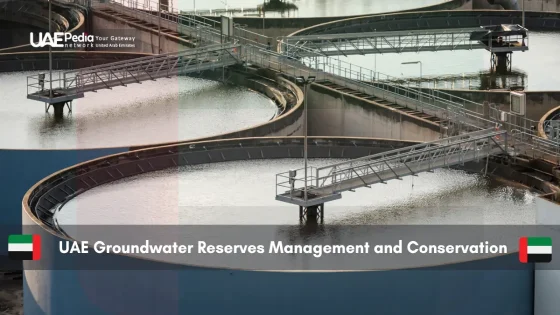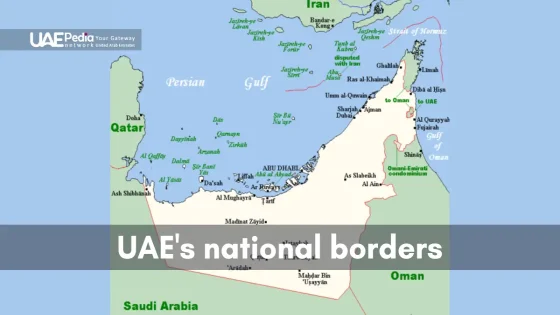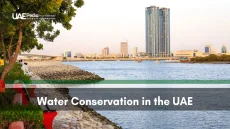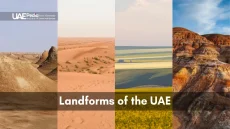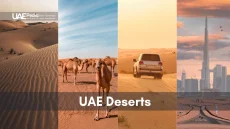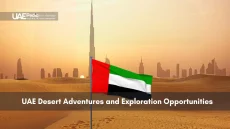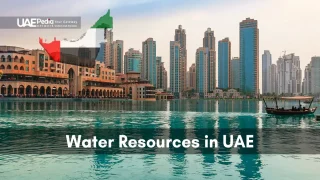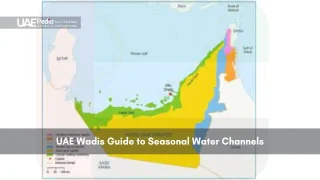Did you know 3% of the Emirates’ terrain faces extreme erosion risks – enough to fill 15 Olympic pools with displaced earth annually? While 83% of the land remains stable, shifting sands and flash floods reveal a fragile balance beneath our feet.
Nationwide efforts now blend ancient wisdom with cutting-edge tech to protect vital ecosystems. From sediment-trapping dams in wadis to drought-resistant crops, these initiatives aim to safeguard food security while combating global topsoil depletion. A recent study shows northern regions like Fujairah face increasing rainfall intensity, making erosion control crucial for infrastructure and agriculture alike.
What makes these programs unique? They transform arid landscapes into living laboratories. Farmers test new irrigation methods while engineers design barriers using local materials. Together, they’re proving deserts can thrive when we work with nature rather than against it.
- Urgent action combats erosion in vulnerable desert ecosystems
- Regional leadership models sustainable land management practices
- Innovative solutions protect agricultural futures and natural heritage
Global Soil Degradation and Its Implications
The UN’s latest report paints a stark picture: our planet’s fertile layer—the thin blanket feeding billions—is vanishing faster than we can replenish it. Scientists estimate we’ve already lost 33% of Earth’s topsoil to erosion, with another 90% at risk by 2050. This isn’t just about dirt—it’s a slow-motion crisis threatening food systems, economies, and climate stability worldwide.
UN Warnings and the Looming Topsoil Crisis
Imagine needing to feed 9 billion people with shrinking farmland. That’s the reality the UN Food and Agriculture Organization warns about, linking soil loss to potential mass migrations and conflicts. Climate change turbocharges this cycle—hotter temperatures bake moisture from the ground, while erratic rains wash away nutrients. “Healthy soil isn’t optional—it’s our life support system,” states a recent UNEP bulletin.
International Lessons on Desertification
But here’s the hopeful twist: China’s Loess Plateau, once called “the most eroded place on Earth,” now blooms with terraced farms after decades of restoration. Their secret? Combining ancient terracing with modern agroforestry. Other nations adopt similar tactics—from Niger’s farmer-led tree regeneration to Brazil’s no-till farming revolution.
These stories prove degraded land can rebound when communities unite behind science-backed solutions. The challenge? Scaling these wins globally before the clock runs out on our planet’s thin green skin.
The Critical Role of Soil Health in UAE Agriculture
Beneath the sun-baked fields of the Emirates lies a hidden lifeline—a living layer that determines whether crops thrive or falter. Since 2020, a groundbreaking national strategy has turned this underground world into a priority, blending science with tradition to nourish both plates and ecosystems.
Impact on Food Security and Water Resources
Imagine growing more with less—that’s the promise healthy earth delivers. Farms using enriched plots report 30% higher yields while slashing irrigation needs, crucial in regions where every drop counts. “Better earth structure acts like a sponge,” explains a Ministry researcher. “It holds moisture longer, letting roots drink deeply between waterings.”
Recent mapping projects identify nutrient-rich zones, guiding farmers to plant smarter. One date palm grove doubled production simply by adjusting crops to match each patch’s unique chemistry. These micro-adjustments prevent waste and keep harvests reliable—a win for dinner tables and export markets alike.
Earth as a Foundation for Sustainable Growth
Here’s where it gets revolutionary: enriched plots now pull double duty. They not only feed crops but trap carbon too—like nature’s vacuum cleaner. Techniques like compost tea applications and cover cropping build organic matter, transforming arid plots into carbon banks.
The 2020-2023 initiatives taught us this: when you listen to the land, it whispers solutions. Sensor networks track real-time moisture levels, while AI predicts which areas need extra care. It’s not just farming—it’s forging a pact between tradition and innovation to ensure every seed has its fighting chance.
UAE Soil Conservation: Strategies to Combat Erosion
Imagine a nation turning its toughest challenge into a blueprint for resilience—that’s the story unfolding across arid landscapes here. Through smart governance and grassroots innovation, the Emirates crafts solutions where policy meets practicality.
When Vision Meets Action
Here’s how it works: farmers receive subsidies to adopt sensor-based irrigation, while research centers develop drought-defying crops. “We’re not just protecting dirt—we’re future-proofing dinner plates,” shares a Ministry climate strategist. Precision agriculture tools now map nutrient levels in real-time, letting growers apply compost teas exactly where needed.
Organic matter enrichment programs work like vitamin boosts for the earth. Cover crops shield delicate surfaces from harsh winds, while terraced gardens slow runoff during rare downpours. The results speak volumes—fields using these methods report 40% less topsoil loss annually.
But the real magic? These efforts double as water security safeguards. Healthier earth acts like a sponge, absorbing precious rainfall instead of letting it vanish into dust. That means more reliable harvests and fuller reservoirs—a win for both grocery bills and ecosystems.
This approach doesn’t just heal land—it builds bridges. Universities partner with Bedouin communities to blend ancestral wisdom with drone tech. Together, they’re writing a playbook that could help deserts worldwide thrive against the odds.
Innovative Programs and the Soil Health Strategy
What if four years could rewrite the future of farming? That’s precisely what unfolded through a series of bold experiments reshaping arid landscapes. Between 2020 and 2023, visionary programs emerged as game-changers, blending tech wizardry with nature’s own playbook.
From Labs to Fields: The Transformation Timeline
2020 kicked off with drones mapping nutrient hotspots across 500 farms. By 2021, farmers received customized “earth recipes”—precise blends of compost and biochar tailored to each plot. “We stopped guessing and started measuring,” notes a lead agronomist. The results? Test sites saw 22% less topsoil loss within 18 months.
| Year | Milestone | Impact |
|---|---|---|
| 2020 | Nationwide soil mapping | Identified 12 priority zones |
| 2021 | Sensor networks deployed | Reduced water use by 35% |
| 2022 | Cover crop trials | Erosion dropped 40% |
| 2023 | Farmer training hubs | 5,000+ adopt new methods |
Regenerative practices became the secret sauce. Fields now wear protective “blankets” of drought-resistant plants between harvests. These living shields trap moisture and anchor precious top layers. Communities joined the movement too—over 200 workshops turned locals into earth guardians.
The numbers tell the story: 18% better water retention in test areas, and carbon levels rising faster than predicted. As one grower puts it: “We’re not just farming crops anymore—we’re growing resilience.” This three-year sprint proves that even stubborn challenges crumble when innovation meets determination.
Inspirational Case Studies Fueling Change
Picture this: a barren landscape reborn as a thriving ecosystem within a generation. Across the globe, bold projects prove that even the most degraded land can heal—when we commit to smart, sustained action. Let’s explore two game-changing models rewriting the rules of environmental recovery.
China’s Loess Plateau Transformation
Once called “the moon’s surface on Earth,” this region lost 1.6 billion tons of earth annually to erosion. Then came John D. Liu’s documented miracle: terraced slopes, reforestation, and community buy-in turned dust bowls into fertile valleys. Today, 35,000 sq km bloom with crops and forests—a living lab for carbon capture and biodiversity revival.
| Year | Action | Outcome |
|---|---|---|
| 1994 | Terracing begins | Erosion cut by 70% |
| 2005 | Forest cover doubles | 500+ species return |
| 2020 | Farm incomes triple | Carbon stored: 1.2M tons |
The Xinjiang “Great Green Wall” Model
How do you stop deserts from advancing? Xinjiang’s answer: plant 100 million trees across 4,500 km. But here’s the twist—locals lead the charge, blending modern drip irrigation with ancient windbreak wisdom. Result? A 12% drop in sandstorms and new habitats for endangered wildlife.
These stories share a blueprint for change:
- Prioritize community-driven solutions over top-down mandates
- Design projects that boost both ecology and economies
- Measure success in biodiversity gains, not just acreage covered
As one farmer-turned-rester put it: “We didn’t just fix the land—we rediscovered our future.” That’s the power of turning dust into destiny.
Integrating Soil Conservation with Climate Action
Imagine turning barren patches into climate warriors—nature’s secret weapon against rising temperatures. Across sun-drenched plains, a quiet revolution unfolds where land restoration becomes climate action. Healthy earth doesn’t just grow crops; it traps carbon and shelters ecosystems like a living safety net.
Carbon Capture Through Smart Land Care
Here’s the science made simple: enriched earth acts like a sponge for CO₂. Every 1% increase in organic matter can store an extra 25,000 gallons of water per acre—and lock away tons of carbon. “We’re farming the sky now,” laughs a researcher monitoring test plots. Techniques like no-till farming and compost layers build carbon banks underground while keeping precious top layers intact.
| Method | Conservation Benefit | Climate Impact |
|---|---|---|
| Cover Cropping | Reduces erosion by 78% | Stores 0.5 tons CO₂/acre/year |
| Biochar Application | Boosts water retention | Sequesters carbon for centuries |
| Agroforestry | Prevents nutrient loss | Creates microclimates |
| Managed Grazing | Strengthens root systems | Cuts methane emissions |
Nature’s Comeback Story
Regenerative practices do double duty—healing land while hosting biodiversity parties. Flowering cover crops attract pollinators, while healthier root zones shelter microbes. In Australia’s Outback, restored plots saw 40% more bird species within three years. It’s proof that working with nature’s rhythms yields richer rewards than fighting them.
Three keys to success:
- Pair ancient wisdom (like crop rotation) with drone-powered soil scans
- Design projects that benefit both harvests and habitats
- Measure progress in carbon stored and species counted
As one rancher turned climate steward puts it: “We’re not just growing food anymore—we’re cultivating hope.” This blended approach turns every acre into a classroom, proving environmental wins don’t require choosing between people and the planet.
Economic and Social Benefits of Ecosystem Restoration
What if healing the land could also heal local economies? Across sun-scorched plains, restoration projects are proving that environmental care fuels prosperity. These initiatives create ripples far beyond erosion control—they’re sparking job booms and stronger dinner tables.
Green Jobs Bloom Where Earth Thrives
Picture former construction workers now installing drip irrigation systems, or Bedouin guides leading ecotours through revitalized dunes. “Every restored acre creates 3-5 local jobs,” shares a project manager from a major restoration service provider. Roles range from soil technicians to native plant nursery staff—careers rooted in community well-being.
Healthy ecosystems supercharge food production too. Farms using regenerative methods report 25% larger harvests with fewer inputs. This isn’t just about bigger yields—it’s stable incomes for families and fresher produce for markets.
- Ecosystem services now employ over 12,000 regionally
- Restored areas increase agricultural production by $18M annually
- 83% of ecotourism operators report higher bookings near revived sites
The magic happens when environmental wins meet human needs. A date farmer turned conservation trainer puts it best: “We’re growing two crops now—dates and opportunities.” From market stalls to research labs, restoration becomes an economic engine that nourishes both land and livelihoods.
Investing in nature’s comeback isn’t charity—it’s smart economics. For every dollar spent on restoration, communities gain $7 in long-term benefits through improved food security and climate resilience. That’s how you plant seeds for generations.
Community Engagement and Educational Initiatives in Soil Management
What if classrooms could transform into living ecosystems? Across interactive workshops, students become earth detectives—analyzing sediment samples and debating solutions to imaginary erosion crises. This hands-on approach turns abstract science into tangible adventures, sparking curiosity that textbooks alone can’t match.
Role-Playing Activities for Aspiring Soil Scientists
Educators like Shahd Najmus of Nutty Scientists use theater-style simulations to teach earth science fundamentals. Kids might play “The Great Nutrient Heist”—tracking how water carries minerals through different layers. “When students embody raindrops or plant roots, complex processes click instantly,” Najmus explains. These games reveal how healthy earth acts as nature’s water filter and food factory.
Communities gain practical insights through:
- Farm visit simulations showing crop rotation impacts
- Interactive maps linking local food choices to land health
- Compost-building competitions with neighborhood teams
One workshop participant shared: “I never realized my tomato plants depended on invisible microbes!” Such moments shift perspectives, turning casual gardeners into earth advocates. Schools report 68% increased interest in environmental careers after these programs.
By merging play with purpose, these initiatives build bridges between dinner tables and ecosystems. Families learn how their food choices influence land quality—and vice versa. The result? A growing network of informed citizens ready to protect the ground beneath their feet.
Embracing a Sustainable Future for the Emirates
The journey from shifting sands to thriving ecosystems isn’t science fiction—it’s happening right now beneath our feet. By blending ancestral land wisdom with climate-smart agriculture, these efforts prove deserts can become classrooms for global change. Every restored acre fights degradation while securing food chains and sheltering native species.
Here’s the exciting part: advanced sand stabilization techniques now work hand-in-hand with carbon-trapping crops. Vertical farms using 90% less water—like those producing 1,000 tons of greens—show what’s possible when innovation meets tradition. Healthier earth means safer water reserves, reliable harvests, and habitats where biodiversity rebounds.
This isn’t just about surviving climate shifts—it’s thriving through them. Picture dunes armored with windbreak forests, farms buzzing with drought-proof pollinators, and communities empowered as earth stewards. Each choice—from water-smart irrigation to protecting microbial life—builds resilience for generations.
Join the movement. Whether you’re a backyard gardener or policy shaper, every action ripples outward. Together, we’ll write the next chapter: where deserts bloom, plates overflow, and our shared home becomes a living legacy of balance.
With 80% of the Emirates’ land classified as arid, healthy soil acts as a lifeline – storing water, supporting native plants like ghaf trees, and preventing sandstorms. Conservation efforts directly impact food security and climate resilience in regions facing extreme heat and scarce rainfall.
Poor soil quality reduces agricultural yields (think fewer dates or camel fodder), increases water usage for irrigation, and worsens air quality during dust storms. It’s a chain reaction – from grocery bills to asthma rates – that underscores why land health isn’t just an environmental issue.
The Emirates blends ancient techniques like falaj irrigation with AI-powered moisture sensors. Initiatives like the 2020 Soil Health Strategy focus on boosting organic matter in farmlands while using drones to map erosion patterns in hyper-localized desert zones.
Absolutely! Community gardens in Dubai Hills Estate and Abu Dhabi’s mangrove planting programs let city dwellers get their hands dirty. Even composting food scraps or choosing drought-resistant plants for balconies helps reduce pressure on fragile ecosystems.
Rich soils store 3x more carbon than atmosphere – critical in a nation with high emissions. Projects like Al Ain’s regenerative farms not only capture CO2 but also cool microclimates through increased vegetation, creating a buffer against rising temperatures.
Bedouin methods of rotating grazing areas and using salt-tolerant barley varieties inspire today’s programs. The Ministry of Climate Change integrates this wisdom with tech – like using satellite data to revive ancestral water-saving agricultural layouts.
Yes! From desert ecology researchers at UAE University to sustainability officers at Masdar City, roles are growing. The Emirates Soil Museum even offers internships, while agritech startups seek experts in hydroponics and soil microbiome analysis.
Stick to marked dune-bashing routes to prevent erosion, join “leave no trace” camping tours, or book experiences like Sharjah’s Wasit Wetland tours where entry fees fund habitat restoration. Every mindful choice helps preserve the desert’s delicate balance.

